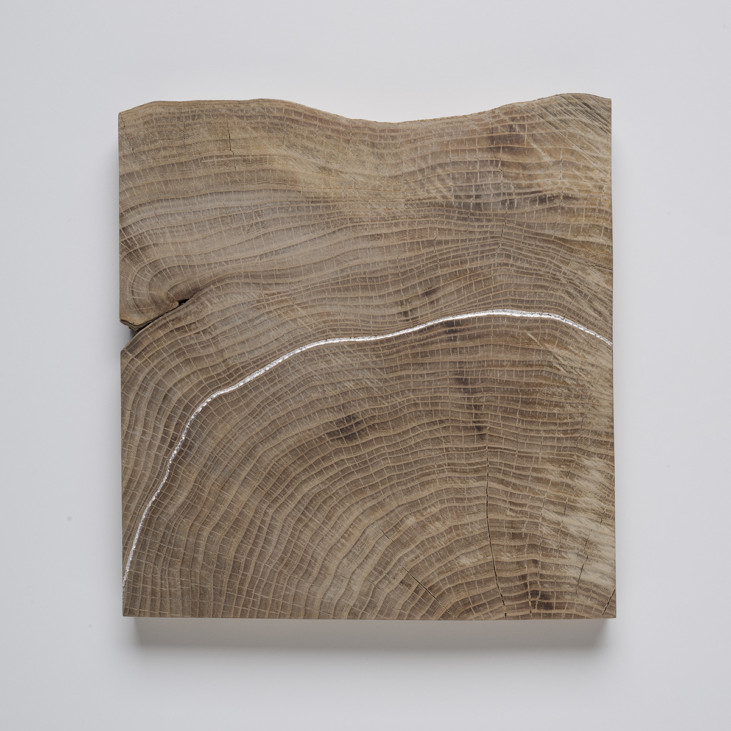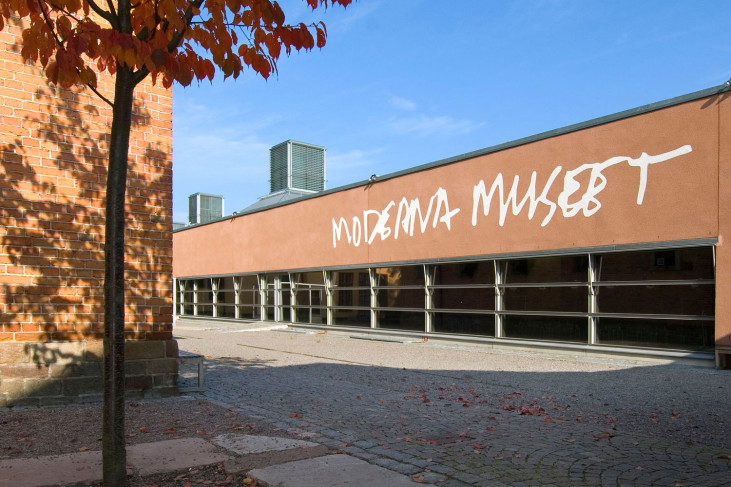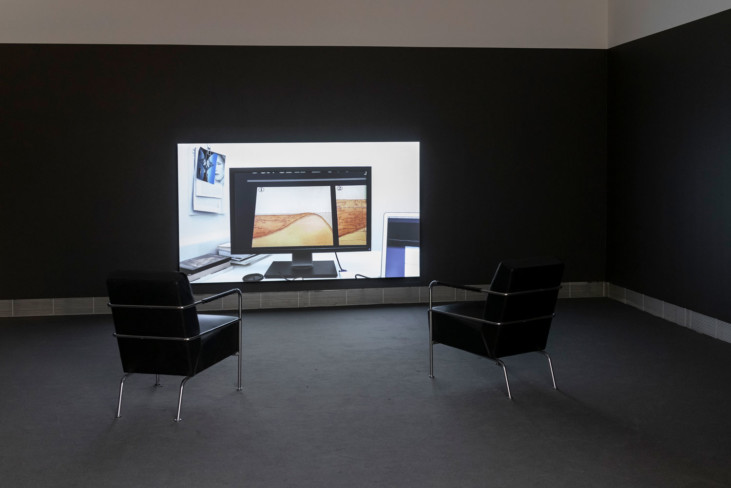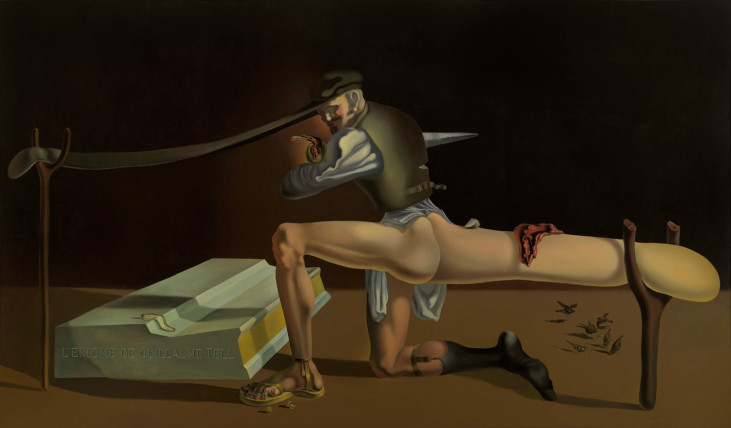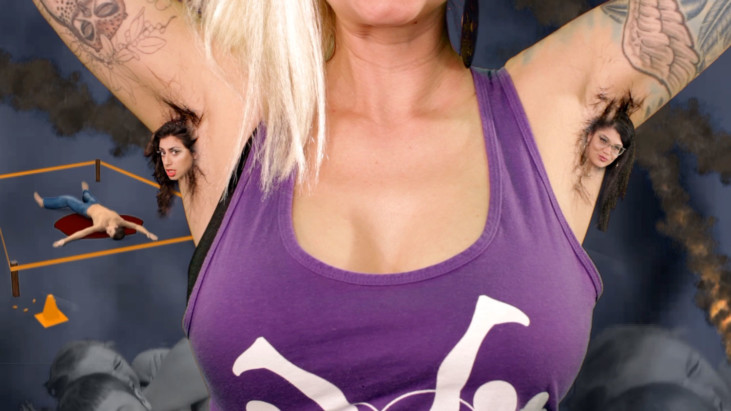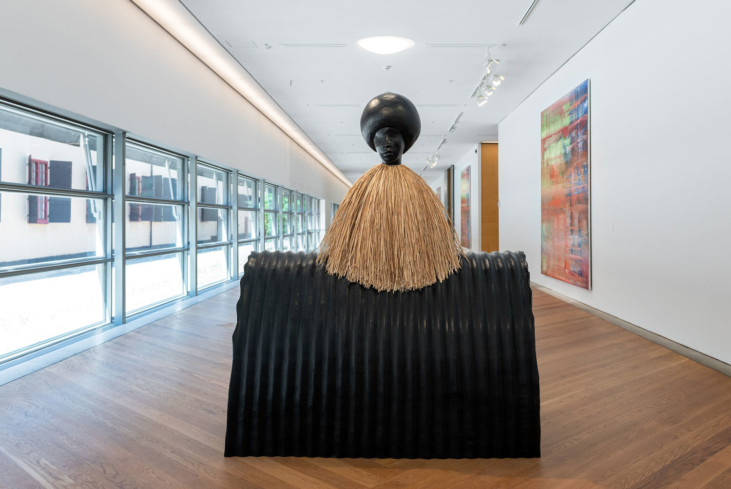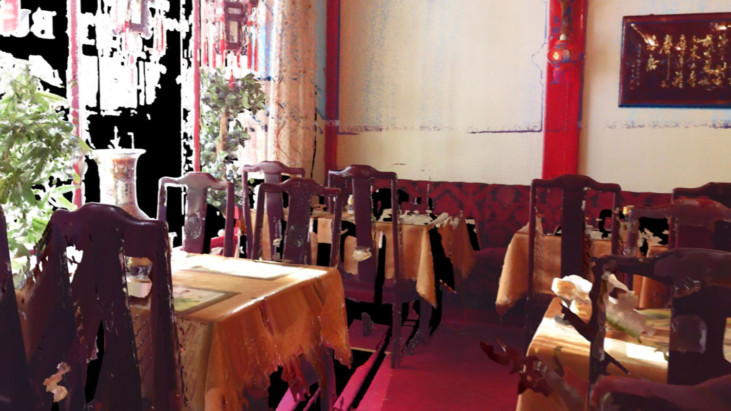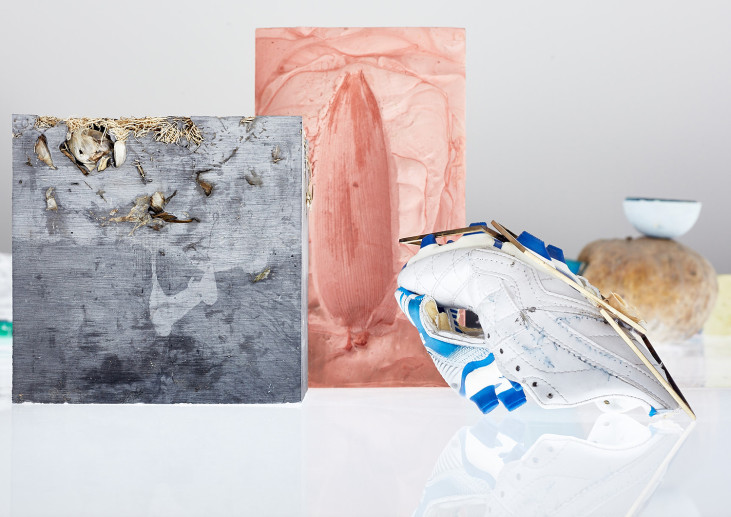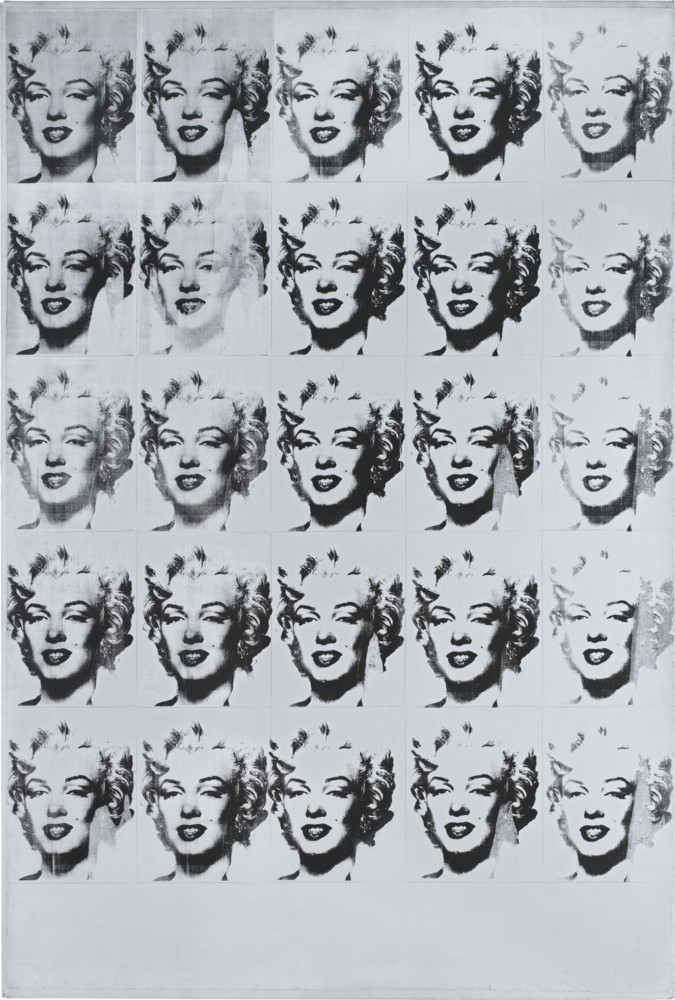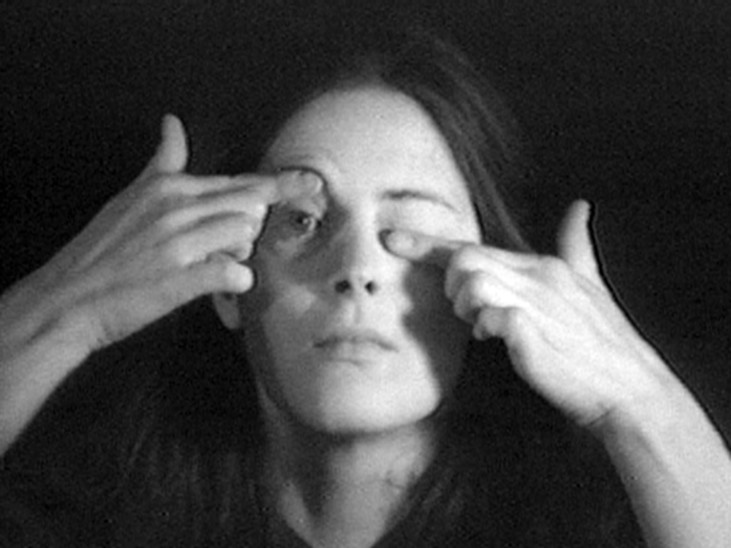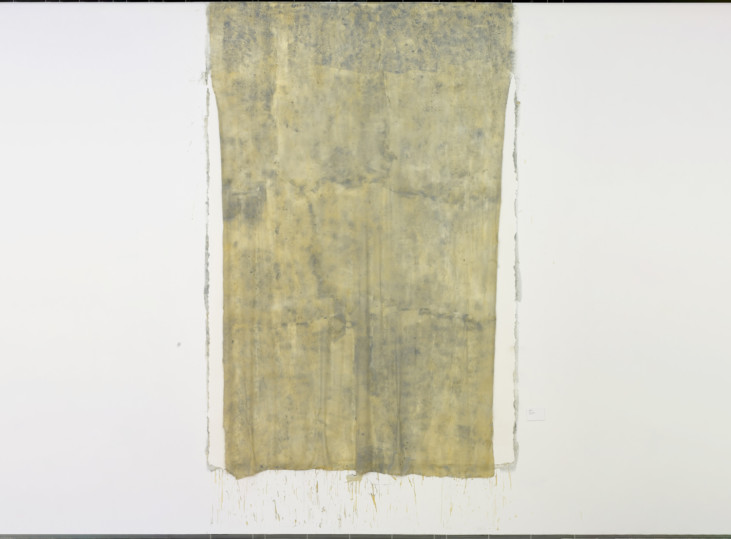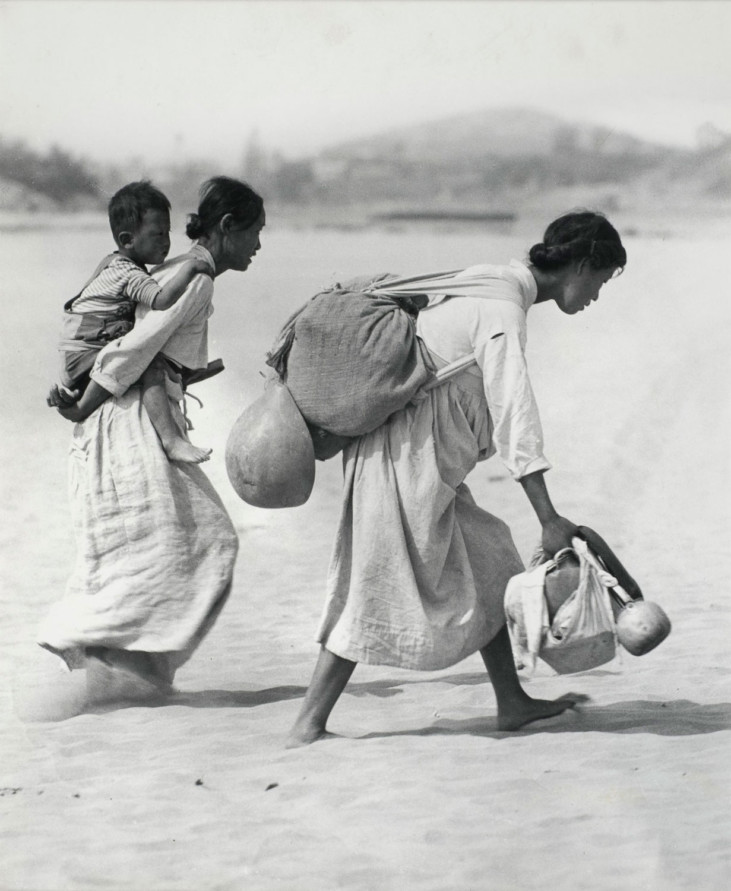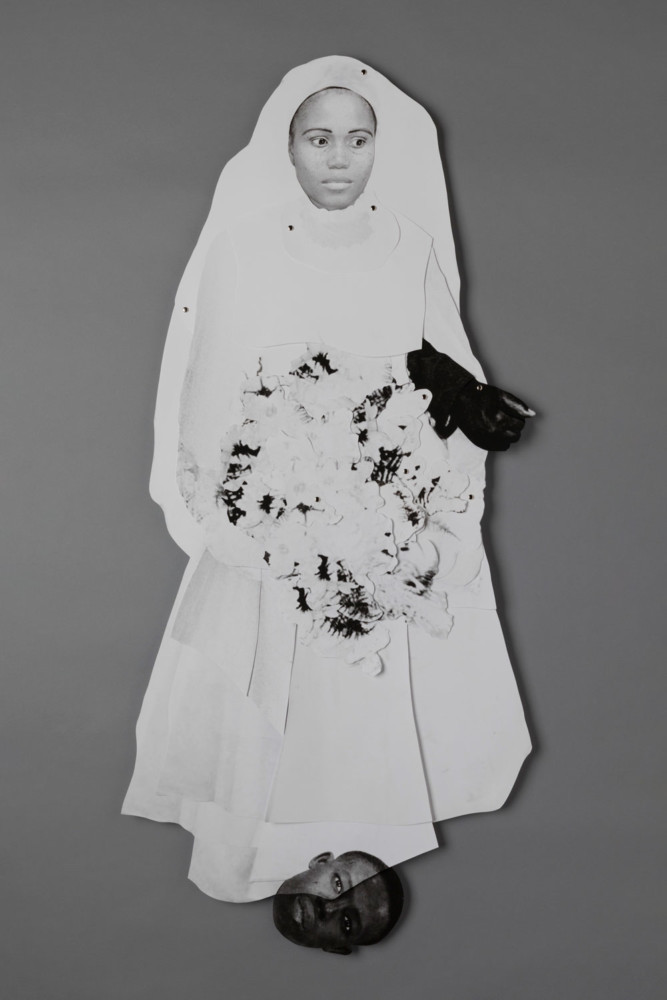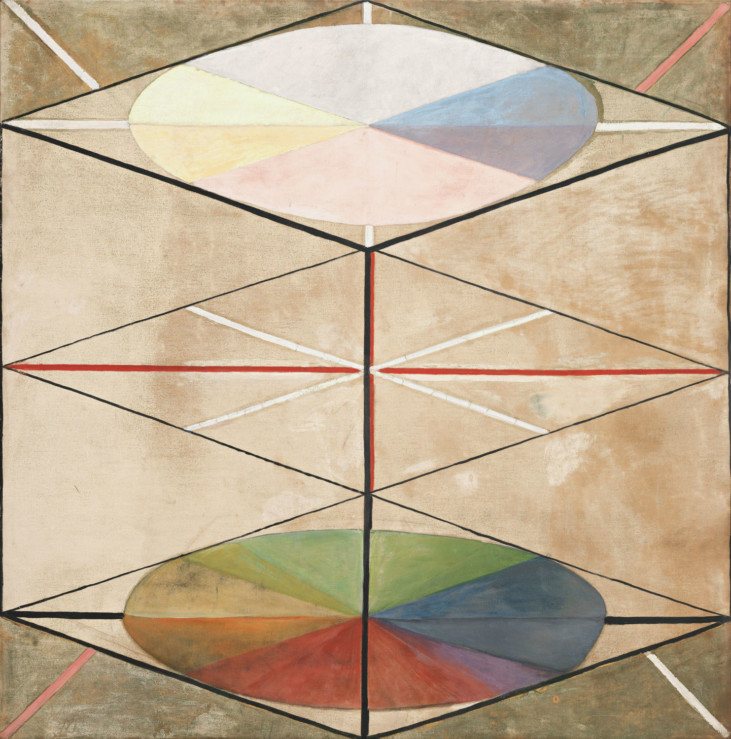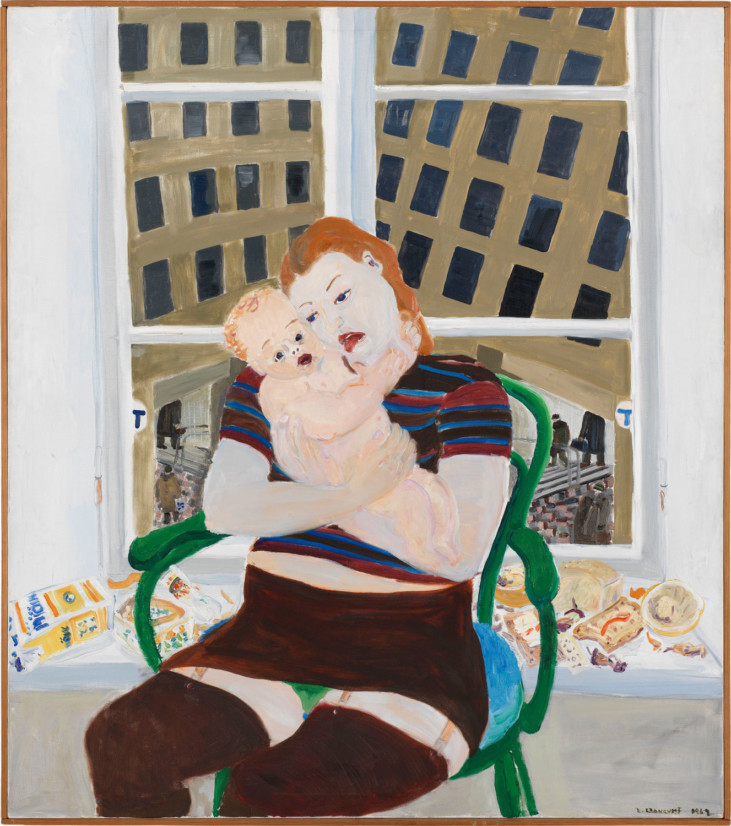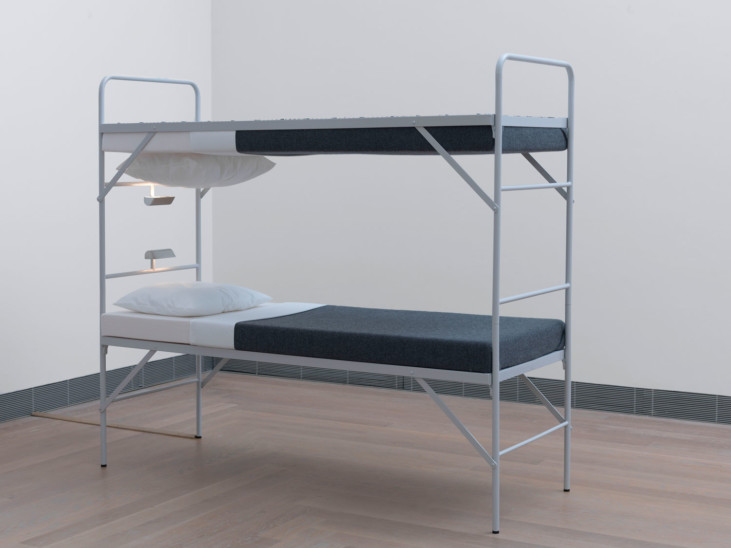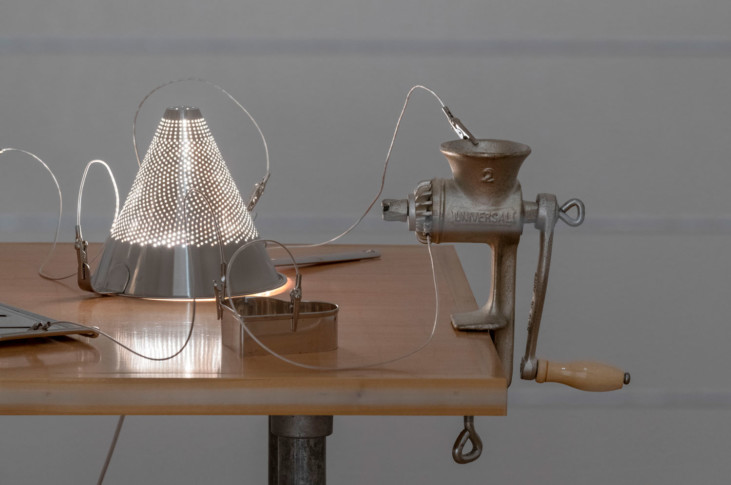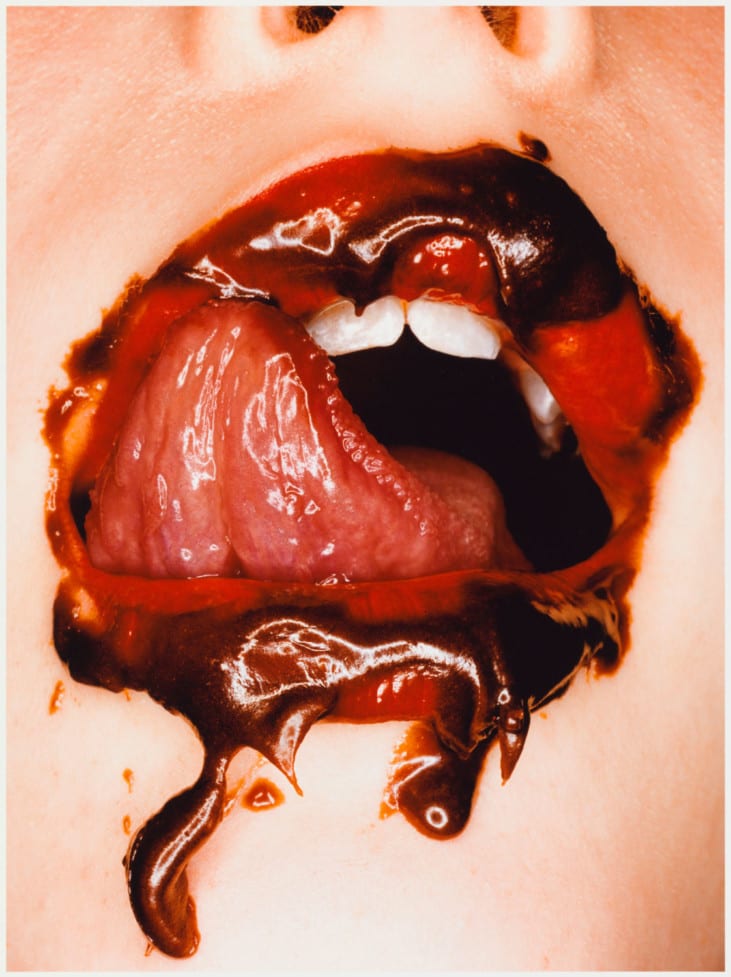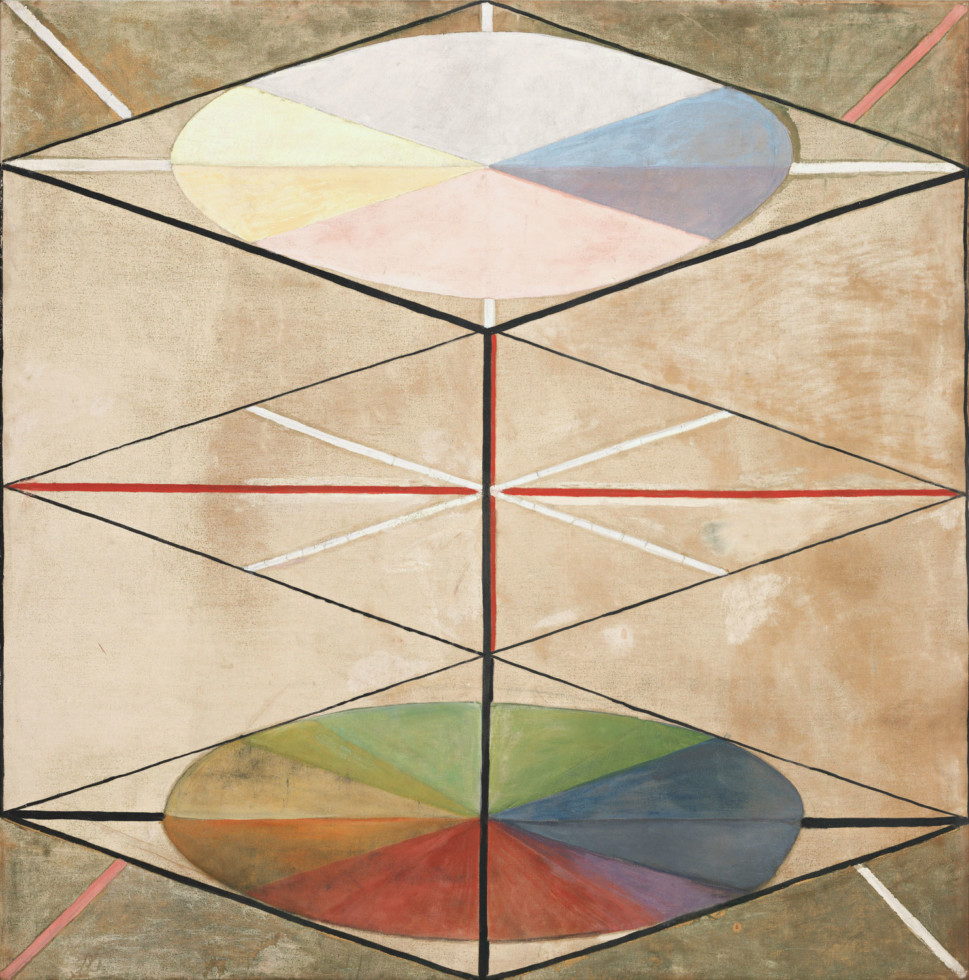
Hilma af Klint, Svanen, nr 23. Grupp IX/SUW, 2015 © Stiftelsen Hilma af Klints Verk
18.6 2019
Spheres of Abstraction & Realism and Pure-Hearted Poetry – Re-hangings in the Collection
Spheres of Abstraction
This room presents a few of the artists who, in different places and with different intentions, developed an abstract formal imagery in the first decades of the 20th century. Some saw geometric shapes as a way of liberating art from its task of depicting the world. Others chose abstraction to try to portray a spiritual universe, or to render the impressions of movement and speed that appeared in modern cities.
Abstract art was also incorporated in ideological visions for utopian societies. The Russian artist Wassily Kandinsky begins his essay ”Concerning the Spiritual in Art” (1911) with the words: ”Every work of art is the child of its age and, in many cases, the mother of our emotions.” These words echo the widespread interest in spirituality, and especially theosophy, at the turn of the century.
He shared his beliefs with the Swedish artist Hilma af Klint, who had embarked on a comprehensive project the previous year to visualise a non-visible reality. This took place in an era where scientific theories were changing our notions of how reality is perceived, and how it can be described. Theories of modern physics turned concepts such as time and space, previously regarded as constant, into something relative.
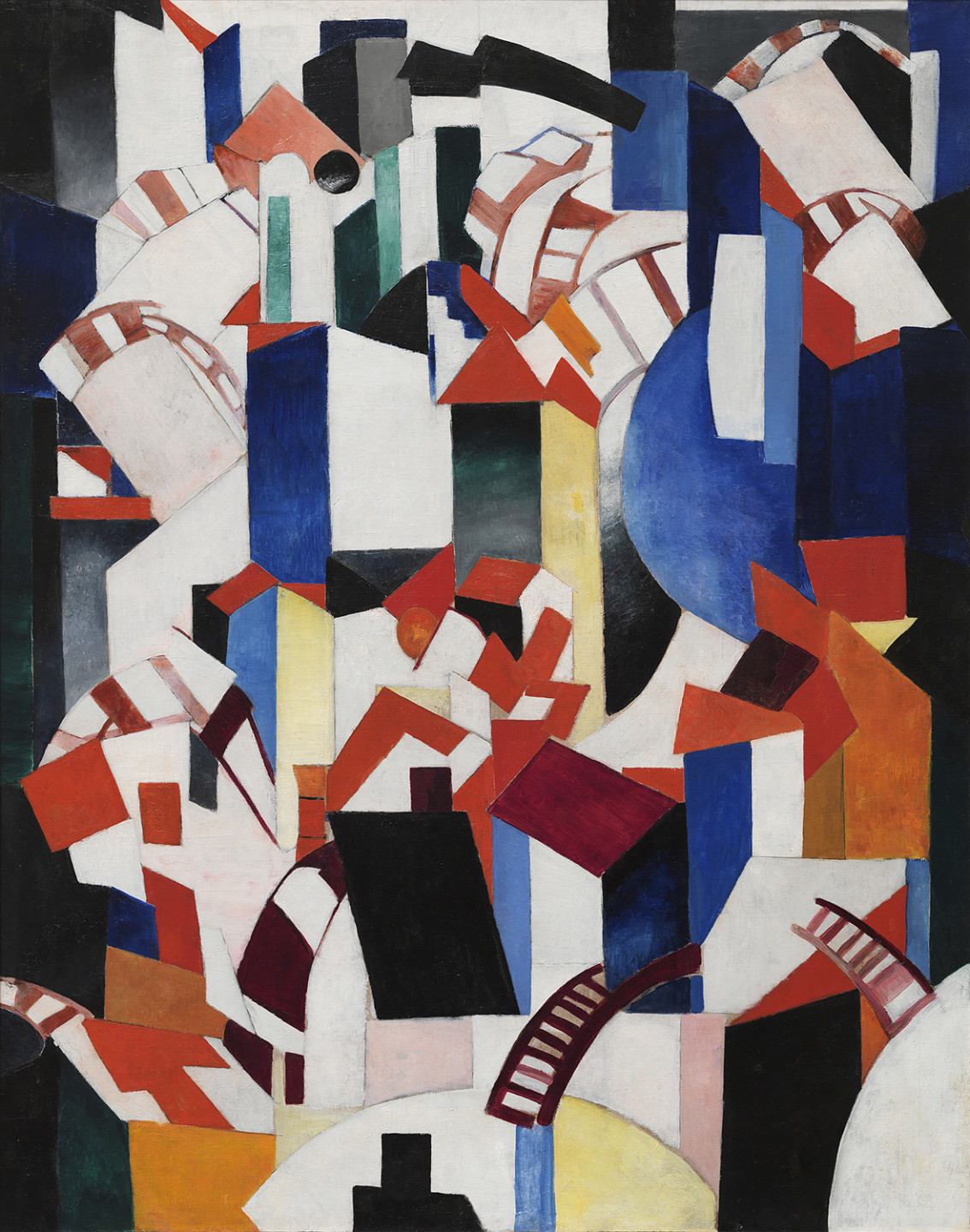
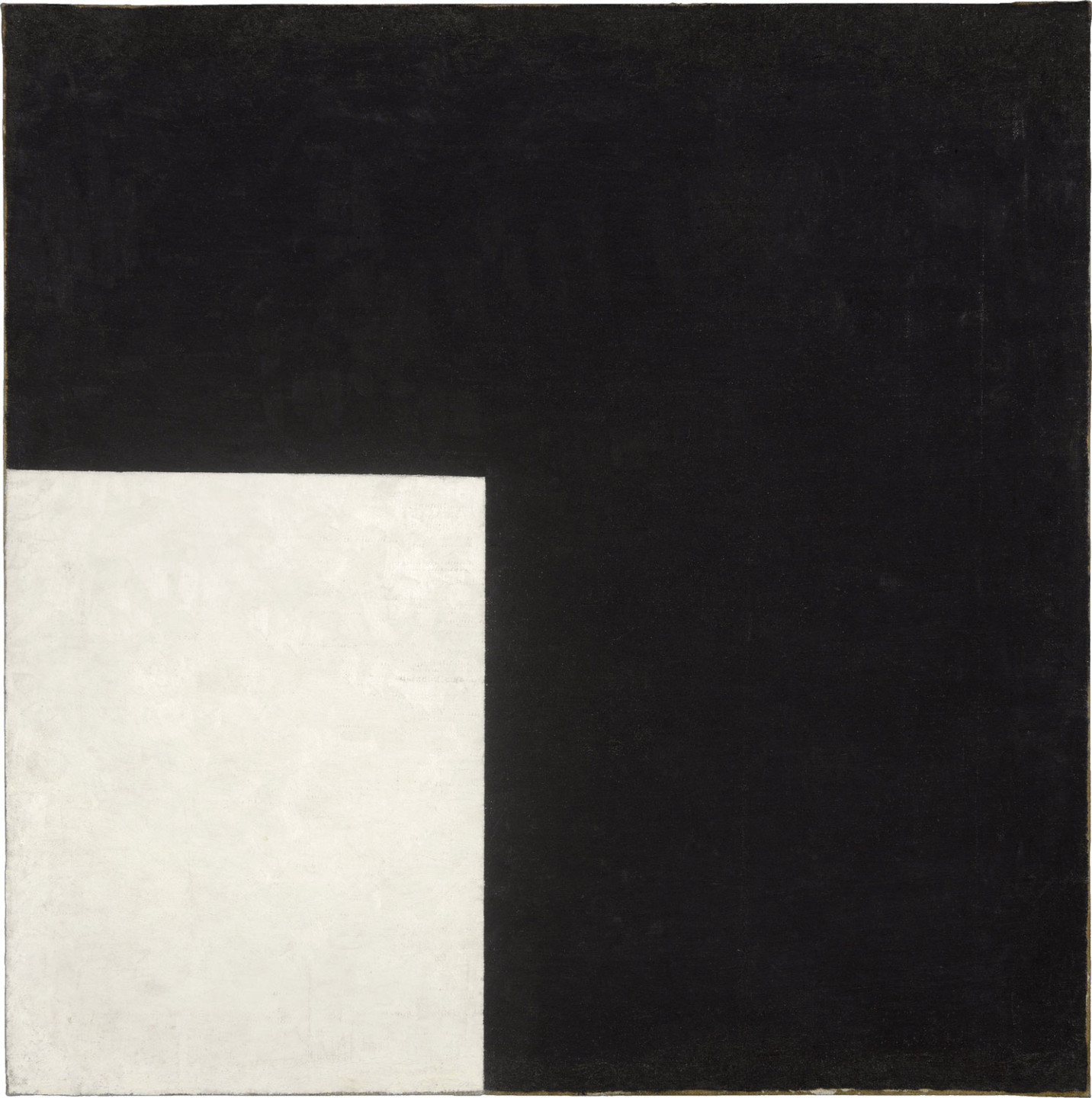
All around Europe, artists saw how film and the performing arts could challenge and influence society and put art itself in motion. The performing arts were regarded as a ”Gesamtkunstwerk”, a total work of art, where several artistic media could coexist – a laboratory where ideas of a new society could be tested and visualised. During a few intense years, the Russian avant-garde artists explored image production through abstract geometry in the performing arts, film, textiles and graphic design. Artists were involved in designing stage sets and costumes for the innovative and influential ”Ballet Russes” (Russian Ballet) in Paris. In radical and spectacular performances, the imagery of the avant-garde was thus brought to life through body movements.
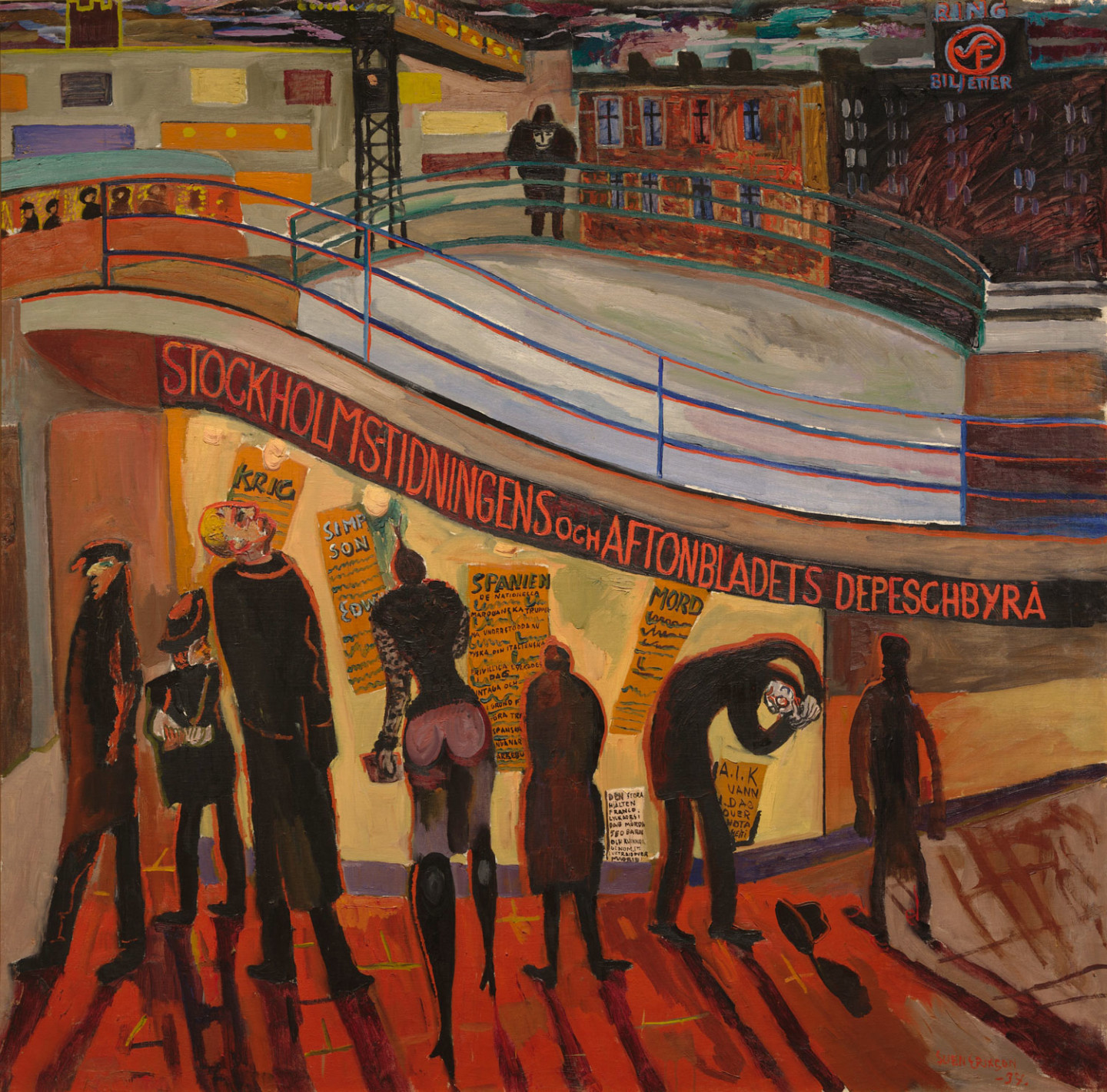
Realism and Pure-Hearted Poetry
18 June 2019–23 August 2020
100 years ago, the world had experienced rapid and revolutionary social change. Industrialisation, new technologies, urbanisation, wars and a collapse of the stock exchange impacted on living patterns and everyday conditions. Certain aspects of existence became more complex. Several artists felt a need to see and preserve in their art the simplicity that was disappearing. They painted the scenes around them, or even their own lives, to hold on to an image of something good and peaceful. The emphasis was on the idyllic, full of joy and harmony. In Sweden, they became known as ”Naivister”, naïve artists, for the artless style. Their subjects often refer to the Romantic movement’s view on the pure, innocent and unspoiled.
The naïve pictures showed moments from ordinary days or celebrations, seasons and traditions, stories and fantasies. They serve as conserved images of times past, and comment on the political ambitions that turned Sweden from poverty into an industrialised nation. Af ew of the narratives relate to old customs and habits that were slowly giving way to modern and urban culture. Other works emphasise moods and convey impressions of smell, sound and emotion.
Several of the naïve artists belonged to the organisation Färg och Form, Colour and Form, which was founded in 1930 to enable artists to sell their works directly to buyers, since things were tough on the art market. The naïve artists have been both loved and frowned upon for their colourful, imaginative and traditional motifs. The world appears different depending on the perspective of both artist and viewer. The naïve artists chose to focus on the inner world that formed their universe.
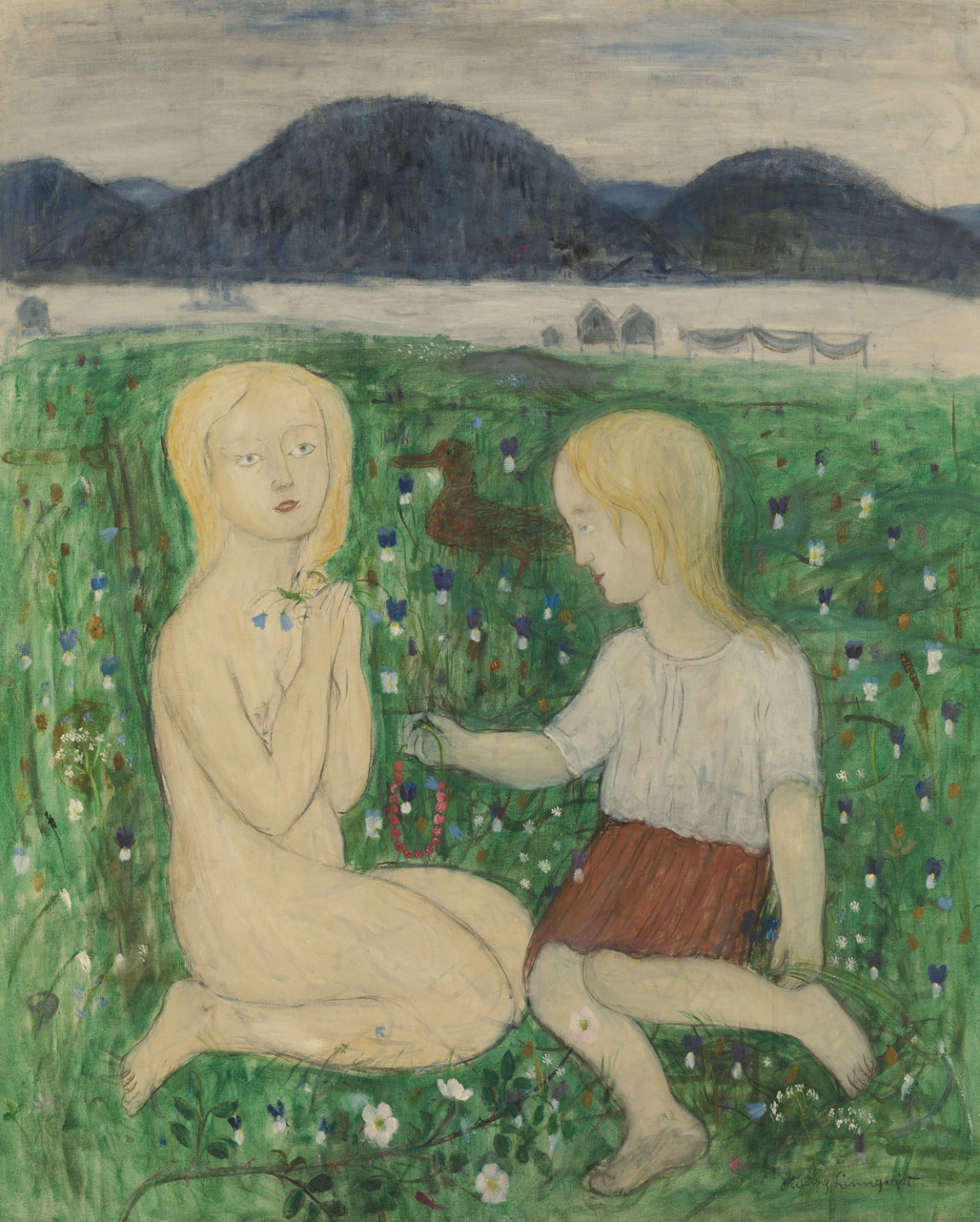
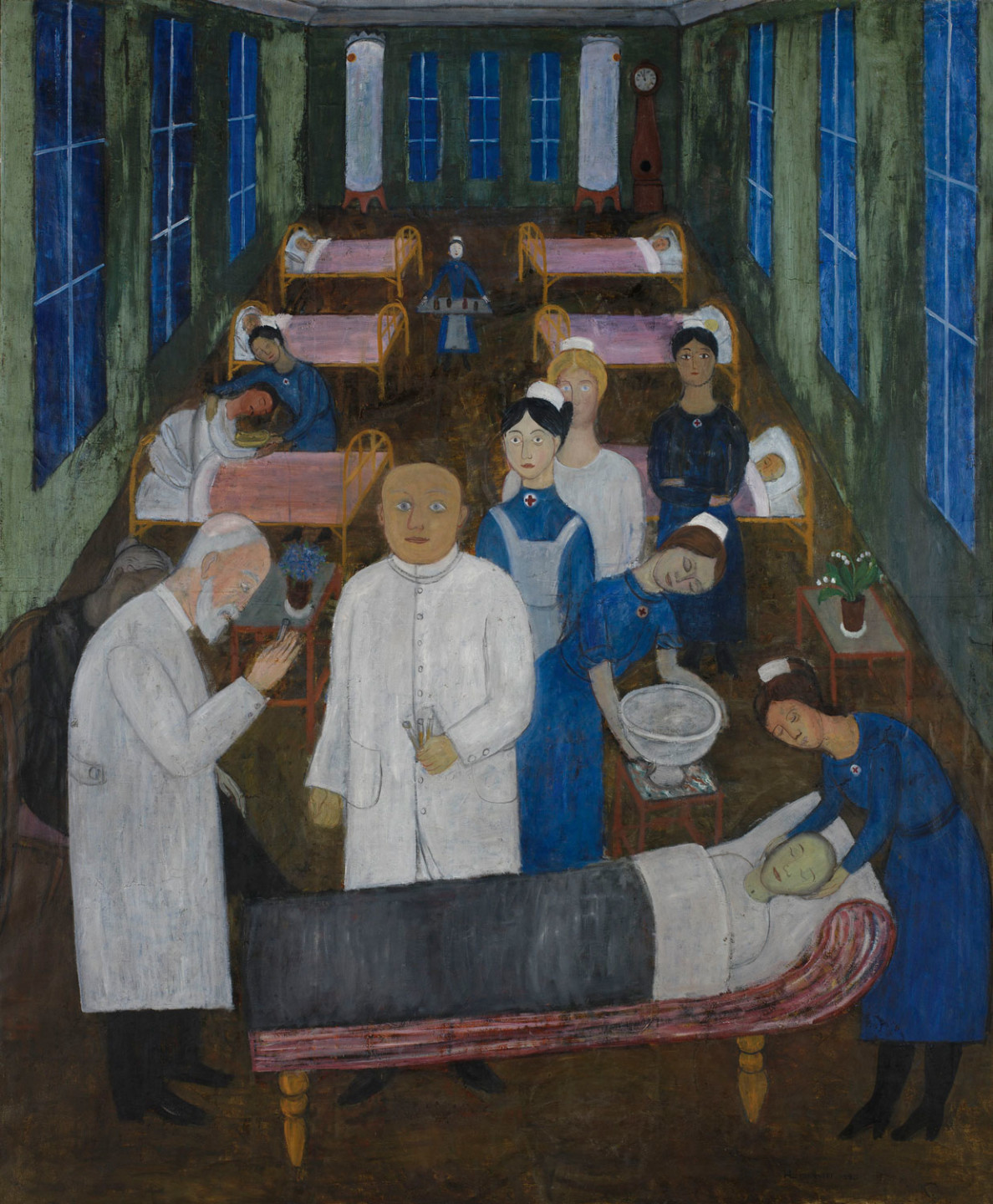
You find the galleries in the Collection on floor 4
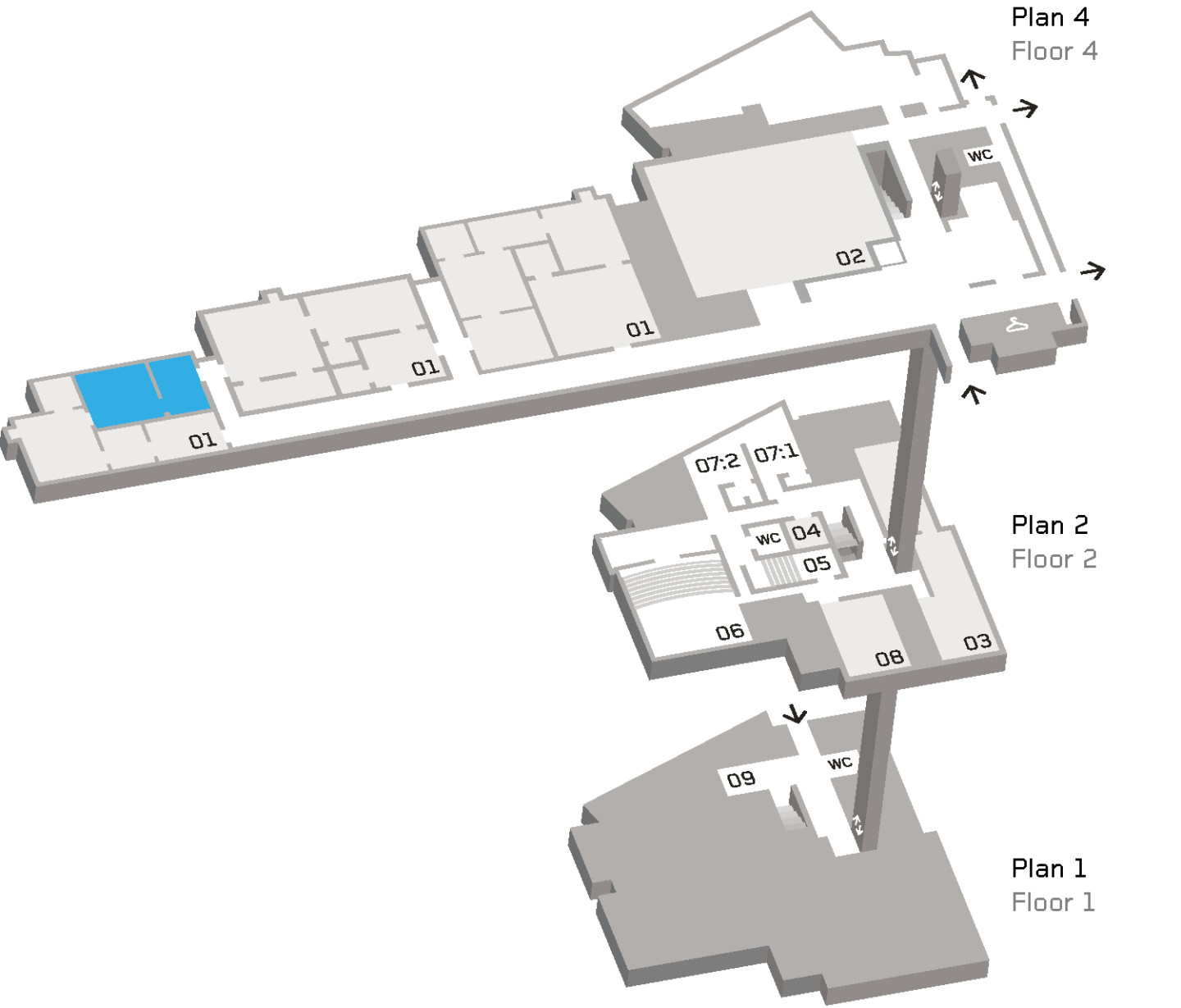
A new presentation of the Moderna Museet collection
A museum collection can be presented and interpreted in countless ways. Throughout 2019, the Collection will be in focus even more than usual, with a major new presentation that will unfold gradually in all the Museum’s collection rooms.
The art will be displayed thematically to a greater extent than before, to highlight new contexts. The new presentation is largely chronological, with occasional surprises by juxtaposing early key works with recent 21st-century acquisitions.
The ambition is to visualise even more narratives about the past and present. One premise for the new presentation is that history is not static but is constantly read and interpreted from a contemporary perspective. Therefore, several versions and interpretations of the Moderna Museet Collection will follow.
More on the Collection: Moderna Museet Collection
Published 18 June 2019 · Updated 24 August 2020


